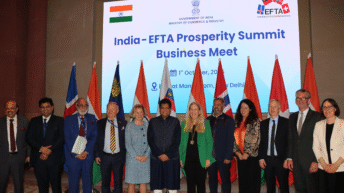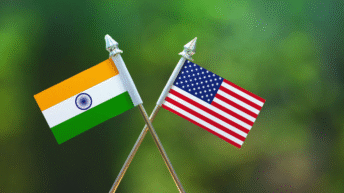
“Most books on Indian Classical music have been written for practicing musicians or for scholars of music. I wanted to bridge the distance between the uninitiated common man and the performing artist, in order to enhance the appreciation and enjoyment of the vocal tradition of Hindustani classical music. This inspired me to write the book – Essence of Hindustani Classical Music Vocal Tradition” – Shri Shardanand Sinha, Author.
The book consists of 8 chapters with important details on the historical development of Hindustani music, its many genres, elements, characteristics, foundations, major forms and popular instruments.
Three appendices on 1) Raaga, Thaat & Time (there are 10 thaats- the framework of each raag), 2) List of eminent musicians, 3) Tracing the descent of great Gharanas in a genealogical chart, are presented in a neat tabular and chart format to enable easy understanding of the main text.
The book concludes with an interesting glossary of musical terms, acknowledgments and references.
The first chapter traces the origin of music and its development across centuries. Among the four Vedas, the Sama Veda ( the shortest, the oldest and earliest literature on music) is considered as the main source of chants, hymns and melodies. Various excavations in the Saraswati and Indus valley such as the flute, veena, dancing Shiva as Nataraja and other sculptors, authenticate the origin of music from the Vedic period.
Itihaasas like the Ramayana also make references to sounds of vocal and instrumental music, Ravana is credited with the invention of the bow instrument called Bahuleen, and Krishna played the flute in the Mahabharata and Arjuna too was a gifted musician and dancer.
WIth great sages like Yagnavalkya and Manduka contributing to the system of music, it further matured in the imperial period of the Gupta dynasty, found its place in the classic the Kumarasambhavam by Kalidasa, gained royal patronage around the 10th to 14th centuries CE under monarchs who themselves were adepts in music, and marked the influence of a large number of poet saint-singers in the Bhakti Age between the 14th and 18th centuries.
Influenced greatly by the Mughal rule under Akbar in the 16th century, the perspective of North Indian music slowly changed from being an expression of devotion in temples to a pleasurable pursuit in the royal courts.
Various genres like Dhrupad, Dhamar & Kayal, Thumri, Dadra, Tappa, took new forms with their own distinctive elements of language, style, context, elaboration, emotion, modulations, tempo, rhythmic cycle etc.
Chapter 2 explains the 4 forms of Dhrupad singing – Dagar Bani, Khandar bani, Nauhar Bani, & Gauhar Bani, how
Dhamar has more gamaaks than Drupad; the Kayal is based on imagination and fanciful improvisation; the Thumri originated from Lucknow & Banaras with emphasis on themes of love and separation; Dadra compositions are inspired by nature and the seasons; Tappa is a genre evolved from the folk songs of Punjab and Sindh.
In Chapter 3, the elements of music which govern the singing such as Saptak (octaves), Sruti (Pitch), the basic notes Swaras, Laaya, Taal, the 10 types of Thaat, Drone, Alaap, Taan & Alankars are explained quite elaborately.
“According to Pandit Vishnu Narayan Bhatkande (1860 -1936), each one of the several traditional ragas is based on, or is a variation of 10 basic thaats, or musical scales or frameworks. The ten thaats are listed on page 17 – Elements of Musical Expressions.
Chapter 4 illustrates in detail the characteristics of Kayal. “Khayal is least dominated by words…it ceases to be a literary element and becomes a musical element. Purity of note or Swara becomes of prime importance in khayal. The four essential elements of khayal are sthyai or antara, alaap, bol taan & taan”
Khayal represents a very exciting phase in music. The freedom it gives to a singer, the imagination the musical notes soar into, and the picture of the raaga the musician can paint which cannot be identically repeated, makes khayal singing unique and fresh!
The concept of Raag is the same in any musical tradition, be it semi-classical or classical – Carnatic or Hindustani. It is not just a scale or a combination of musical notes put together. Raag is the soul of music, a melodic structure for a musical composition that has many colors of creativity, evoking a certain sentiment.
Pandit Vishnu Narayan Bhatkhande (1860 – 1936) was an Indian musicologist who wrote the first modern treatise on Hindustani classical music. He developed a pedagogy of teaching Hindustani music. The four-volume Hindustani Sangeet Paddhathi written by Bhatkande is even today the standard text for Hindustani classical music.
Chapter 5 lists 40 principles of Indian classical music according to this revered musicologist.
Interestingly it also mentions that raaga was defined authentically as early as the 7th century in the book Brihaddeshi, an early treatise of classical Indian music, written by Matangadeva. Raaga is “The tonal composition constituted by swaras and varnas and capable of entering the mind of all living beings is a raga”
Chapter 6 traces the beginning of Gharana to Sadarang, an honorable musician in the court of Moghul Emperor Mohammad Shah (1719 -48). It was only after a period of 100 years (between the 19th and the early 20th century) that 5 Gharanas grew famous under feudal patronage: Jaipur, Gwalior, Patiala, Indore, Rampur.
The tradition of Guru Sishya Parampara was an exclusive means of learning. With the establishment of learning centers like Gandharva Mahavidyala (1901), The Music Academy Madras (1928), and the amalgamation of princely states into the Indian union post-Independence, the Guru Shishya tradition and the concept of Gharana changed as distinctive features, boundaries and rules of the system were replaced by wider influences and experiments due to the ease of travel and the irruption of modern technology.
Chapter 7 portrays 9 well-known Gharanas (Gwalior, Agra, Jaipur – Atrauli, Kirana, Patiala, Rampur – Sahaswan, Sham Chaurasi, Delhi, Bhendi- Bazaar) mentioning their attributes, founders, and singers from India & Pakistan who brought popularity to them. (Pages 50 – 71)
The confluence of music & musical instruments determines the success of any vocal recital. Mastering an instrument requires as much perseverance and dedication as learning vocal music.
Stringed instruments such as the Veena, Vichitra Veena, Sitar, Sarod, Sarangi, Tanpura, Esraj, Santoor, Violin; Percussion instruments like the Tabla, Pakhawaj, Mridangam; Wind instruments like the Flute, Shenaiand Harmonium are briefly described in the final chapter 8, along with names of many musicians who made a mark in playing them.
Indian classical music has always been a part of the country’s history and endures as a living tradition. It has withstood the tests of time, acquired many forms and gone through changes along with the flow of its evolution. Music continues to enrich life, gratify the soul and bring people and communities together.
Writing such a book is a great service to art & culture. It passes on information that impacts hundreds of people. The author, Shri Shradhanand Sinha who has expressed his passion for music through this volume makes it possible for a practitioner to teach his art more easily, and the book read can turn the average person into a rasika whose appreciation is a fulfilling reward for any artist.






Add comment